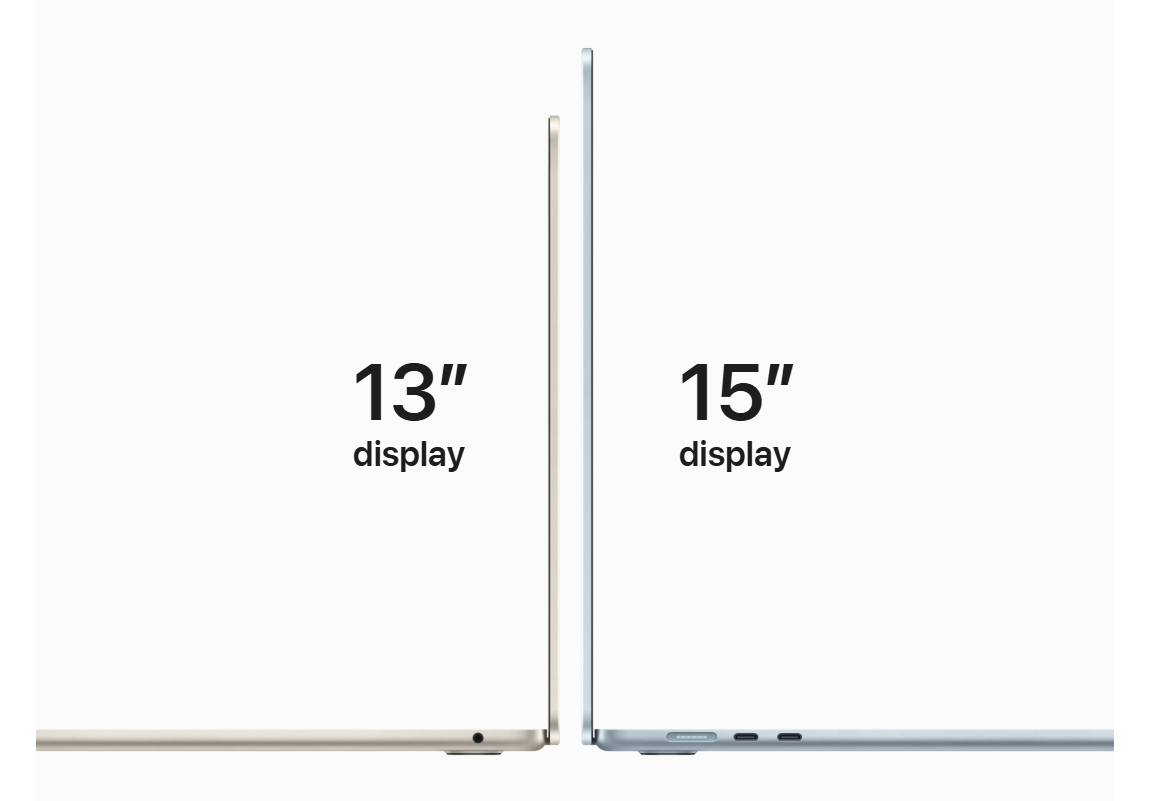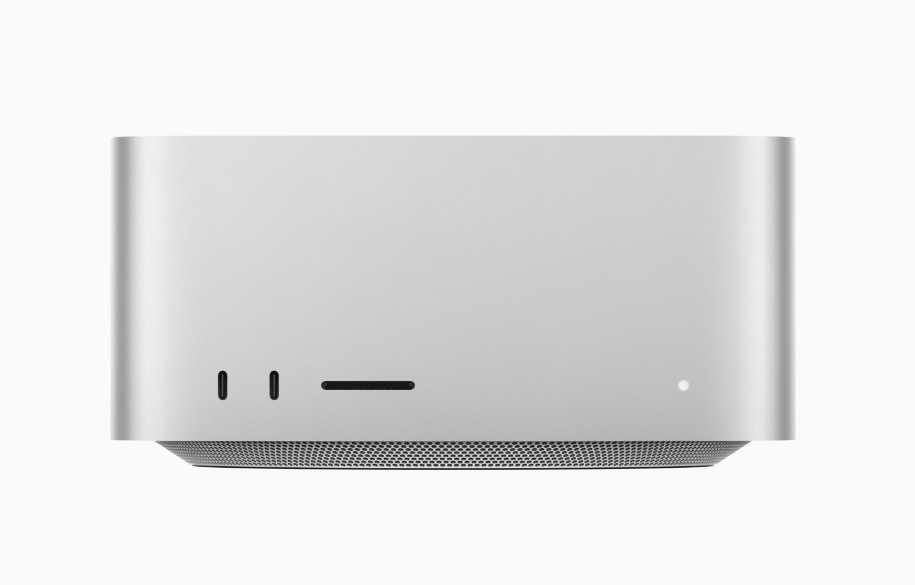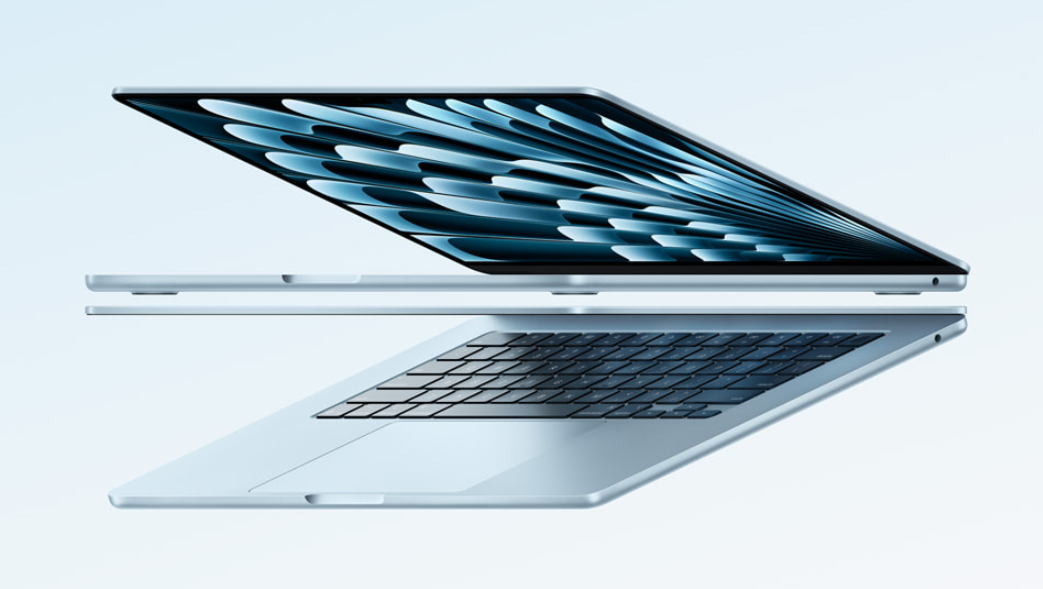Apple Launches New MacBook Air: Powered by M4 Chip, Unexpected Price Drop
Published: March 06, 2025 18:17
On March 6, Apple officially unveiled its next-generation MacBook Air series featuring the M4 chip, sparking heated discussions in the consumer electronics market with its reverse pricing strategy despite performance upgrades. Surprisingly, amid the new U.S. tariff policies, the latest MacBook Air not only avoided a price hike but actually saw a $100 reduction in its starting price compared to its predecessor.
Lower Prices, Enhanced Performance
The new MacBook Air continues the dual-size design with 13-inch and 15-inch versions, now priced at $999 and $1,099, respectively—both $100 cheaper than the previous generation. In terms of hardware, the M4 chip delivers an 18% performance boost over the M3, while also introducing multi-display support for enhanced productivity. Additionally, Apple has expanded its color lineup with a new Sky Blue variant, catering to younger consumers' aesthetic preferences.

Strategic Price Cut Amid Rising U.S. Tariffs
The price adjustment comes just as the U.S. government imposes higher import tariffs on 3C products. Industry analysts highlight Apple’s contrasting approach compared to competitors like Acer, which have raised prices. Technology analyst Mark Li commented:
"Apple, with its 42% gross margin and superior supply chain control, has offset tariff impacts through early stockpiling and production shifts—making this strategy a rare case in the industry."
This launch aligns with Apple’s fast-paced product updates in Q1 2024. In just a few weeks, the company has introduced multiple key products:
February: iPhone 16e debuted at $599(a $170 premium over its predecessor).
March 5: M4-powered iPad Air released at $599, maintaining its price point.
March 6: Besides the MacBook Air series, Apple also unveiled the high-end Mac Studio desktop—starting at $1,999, with maxed-out configurations approaching $9,000.

This rapid succession of releases signals Apple’s acceleration toward M-series chip integration, reinforcing its ecosystem amid intensifying competition in the PC and mobile markets.
Apple’s Dual-Pricing Strategy: Market Capture vs. Profit Retention
Apple’s pricing decisions indicate a deliberate strategy—aggressively cutting entry-level product prices to gain market share while maintaining premium pricing on high-end devices. According to IDC data, MacBook Air accounted for 72% of Apple's laptop shipments in Q4 2023, underscoring its dominance in the ultrabook segment.
Apple CEO Tim Cook’s frequent visits to Southeast Asian manufacturing sites further highlight the urgency of Apple’s supply chain diversification. Vietnam’s facilities now handle 20% of MacBook production, and India’s factories are ramping up rapidly. This geographical shift not only mitigates tariff impacts but also helps Apple navigate geopolitical risks.
Market Reaction: A Mixed Response
Market analysts are split on Apple’s pricing strategy:UBS analysts predict a 25% increase in MacBook Air sales, driven by the price drop. However, iPhone 16e's price hike may cause a 3-5% decline in market share. Social media engagement reflects this divide:
· The hashtag #MacBookAirPriceDrop gained over 500,000 interactions within 24 hours.
· Meanwhile, negative sentiment towards iPhone 16e's price surged by 180% under #iPhoneTooExpensive.
Apple’s pricing strategy is already disrupting the PC market. Competitors like HP and Dell now face an average 15% price disadvantage in the ultrabook category, prompting some distributors to reconsider their inventory strategies.

However, this aggressive pricing also carries risks. Morgan Stanley projects a 2-3% decline in Apple’s overall 2024 profit margin if tariffs persist. Sustaining price cuts long-term could pressure Apple’s profitability, despite its high-margin business model.
Apple’s pricing and product strategy hints at a broader industry transformation. As ARM-based chips and cloud services continue to evolve, hardware manufacturers are shifting from pure product sales to ecosystem-driven revenue models.
By lowering prices on core products like the MacBook Air, Apple is strengthening its user base, potentially paving the way for future service expansions. As Tim Cook emphasized in a recent earnings call:
"We focus on the market landscape five years ahead, not just quarterly fluctuations."
This long-term strategic vision may well be Apple’s key to maintaining industry leadership.
